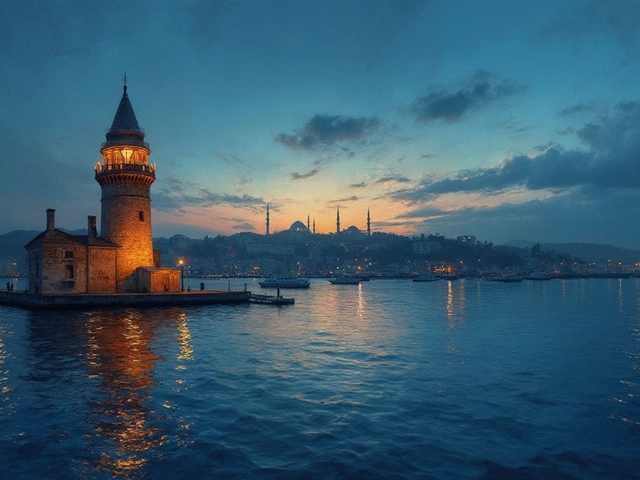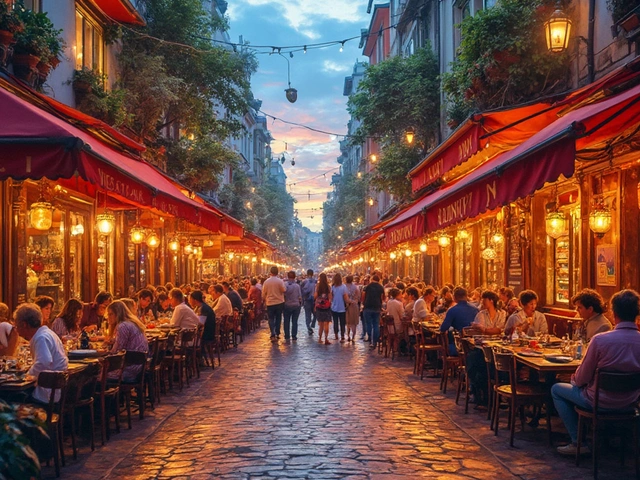Galata Tower: Istanbul’s Timeless Icon of Myths, Views, and Hidden Stories
Discover Galata Tower in Istanbul—where legends, panoramic views, and city rhythm meet. Find secrets, local tips, and true stories behind the iconic medieval structure.
Ever wondered why Galata feels like a living museum? It’s because every stone, street, and café has a story that stretches back centuries. From medieval Genoese merchants to Ottoman soldiers, the area has constantly reinvented itself while keeping a distinctive vibe.
In the 13th century, the Republic of Genoa set up a fortified colony on the northern shore of the Golden Horn. They built warehouses, churches, and the iconic stone tower that still dominates the skyline. The Genoese called the district "Pera," meaning "beyond," because it lay across the water from old Constantinople. Their influence left a lasting mark: narrow cobblestone lanes, vaulted arches, and a mix of Italian‑style façades that you can still see today.
When the Ottomans captured Constantinople in 1453, Galata became a lively commercial quarter. The empire allowed the Genoese community to keep many privileges, so trade continued to boom. Over time, new neighborhoods sprouted, and the famous Galata Bridge linked the old city to the bustling markets on the other side. By the 19th century, European adventurers, writers, and artists flocked here, turning Galata into a cultural crossroads.
Today, Galata blends the old and new seamlessly. You’ll find hip coffee shops sitting next to centuries‑old churches, and art galleries sharing space with traditional bakeries. The mix isn’t random—it’s a living reminder of the area’s layered past.
Here’s how to make the most of your Galata visit:
Timing matters, too. Early mornings are quiet, letting you wander without crowds. Late afternoons bring a golden glow that makes the tower and rooftops look magical. And if you love nightlife, Galata’s bars stay open late, offering rooftop drinks with stunning city views.
Getting around is easy. Walkable streets, plenty of tram stops, and ferries that cross the Golden Horn make it simple to hop from one historic spot to another. Grab a public transport card, hop on the T1 tram, and you’ll be right in the heart of the action.
One final tip: respect the neighborhood’s heritage. Keep noise down in residential lanes, don’t litter, and ask before taking photos inside mosques or churches. The locals appreciate visitors who treat Galata’s history with care.
Whether you’re a history buff, a food lover, or just someone looking for Instagram‑worthy backdrops, Galata’s layered past gives you endless material to explore. Dive in, ask questions, and let the stories of Genoese merchants and Ottoman soldiers guide your adventure through one of Istanbul’s most captivating districts.
Discover Galata Tower in Istanbul—where legends, panoramic views, and city rhythm meet. Find secrets, local tips, and true stories behind the iconic medieval structure.

Maiden's Tower, also known as Leander's Tower, is a historic lighthouse sitting on a small islet in the Bosphorus Strait, Istanbul. This landmark combines tales of love, legend, and strategic significance throughout its centuries-old existence. Visitors are treated to a charming mix of panoramic views, rich history, and cultural insight. Whether you're intrigued by the legends or just seeking a scenic view, the tower offers something unique for every traveler.

Explore Istanbul's top 10 nightlife spots with insider tips, from rooftop bars with Bosphorus views to iconic underground clubs. Dive into a true local night out!

Exploring the enigmatic world of Kadikoy escorts in Istanbul blends the city's cultural heritage with the thrilling adventure of companionship. From its vibrant nightlife to the enticing allure of its escorts, the experience offers more than just a fleeting encounter—it opens a door into the complex cultural influences that shape these intimate moments. This piece delves into the sensual tapestry of Kadikoy’s night scene, enticing readers with vivid stories and candid advice for those looking to indulge in its offerings.

Dive into a culinary adventure with the top restaurants offering authentic international cuisine. This guide takes you on a tour of dining spots where you can savor genuine flavors from around the world, each dish crafted with traditional recipes and ingredients. Whether you're craving Italian pasta, Japanese sushi, or Indian curry, we've got a place for you to try. We also include tips on how to spot an authentic eatery and what to expect during your visit. Explore the world one plate at a time from the comfort of your city.

Get the latest, real-world insights on Istanbul escort services in 2025: pricing, safety, legal status, and how to find discreet, reliable companions without scams or risks.